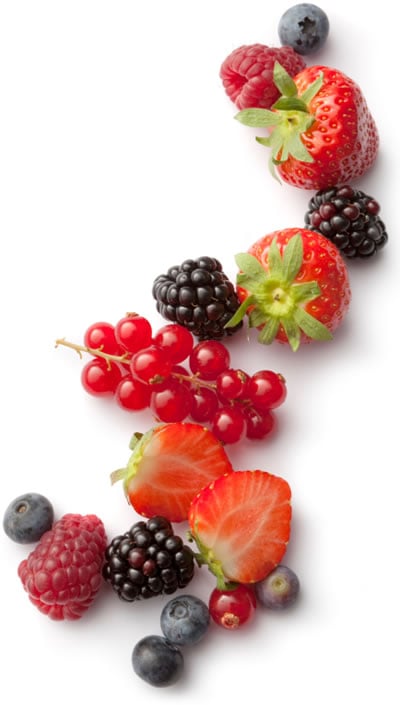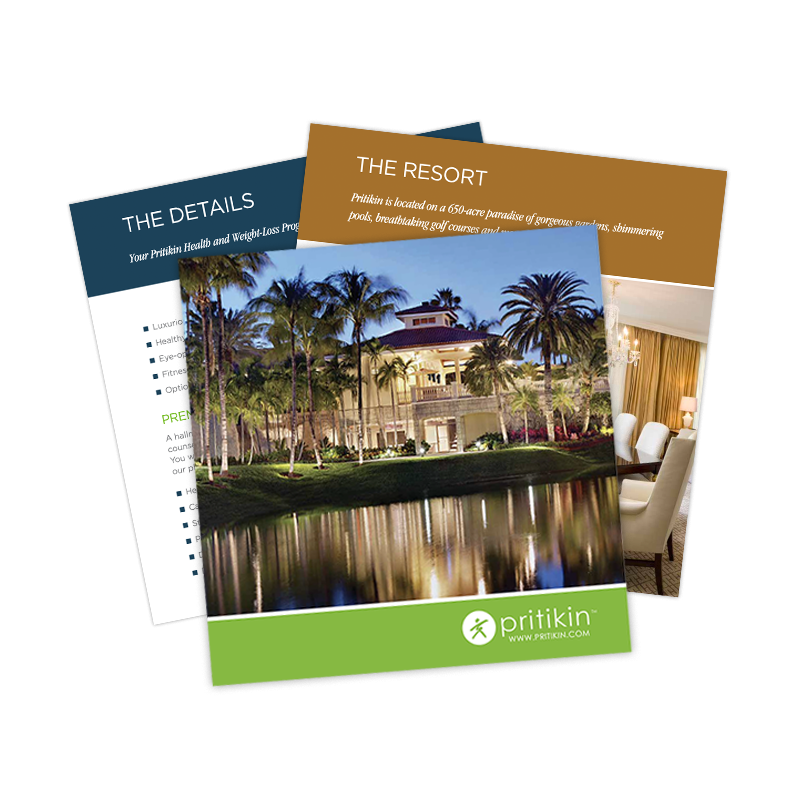Alternatives To High Blood Pressure Medication
Get the details of a healthy lifestyle plan so powerful that many people can wipe out the need for high blood pressure medication in as little as three days.
About 1 in 3 U.S. adults has hypertension, or high blood pressure. Many are treated with drugs but wonder: “Is this my only option?” Find out about alternatives to taking blood pressure medication. What’s proven effective? What isn’t?
Scott H hated being on medications. The 59-year-old electrical engineer from Los Angeles was taking three different pills to lower his blood pressure.
They worked, somewhat. His blood pressure was 130/85, lower than his pre-medication numbers, but still not low enough.
130 Is the New “High”
In recently published guidelines, the American Heart Association, the American College of Cardiology, and nine other health organizations state that high blood pressure, or hypertension, is now defined as 130 and higher for systolic blood pressure (the top number), or 80 and higher for diastolic blood pressure (the bottom number).1
Side Effects
What Scott really hated about being on medications was how crummy he felt. “I was tired a lot, I had a dry hacking cough that never seemed to go away, and erection problems that weren’t going away either. My doctor said they were side effects from the pills, or from the high blood pressure itself, and this was just going to be life from here on out.”
Alternatives To High Blood Pressure Medication

It wasn’t the life Scott wanted. He started researching lifestyle alternatives to blood pressure drugs, found the Pritikin Program, and started revamping his life.
Every morning, he got up an hour earlier to exercise. He cut out fast food completely and embraced the Pritikin Eating Plan. He traded burgers and fries for foods like salmon, roasted sweet potatoes, and big green salads. He filled his refrigerator with veggies and put a big bowl of fruit on the kitchen table, which he re-stocked every other day.
Within 10 days, “my doctor did something amazing. He took me off two of my medications and cut the dose of the third in half. That was three months ago. I’m now off all medications. And my blood pressure is 115/70.
“I’ve got my life back”
“What’s really amazing is that all the side effects from the meds are gone. I’ve got my life back. I honestly didn’t think I could ever feel this good again.”
Effects of Lifestyle Change
Scott is not alone. Large scientific studies published over the last two decades have affirmed the power of lifestyle changes like healthy food and exercise in lowering and controlling blood pressure.

Learn More About Pritikin
Here are research highlights:
-
Dietary Approaches to Stop Hypertension (DASH)
Several studies funded by the National Institutes of Health have found that the DASH diet lowers blood pressure as well as or better than medications. DASH, similar to the Pritikin Program, promotes menus that are high in fruits, vegetables, whole grains, and beans; low in fats, salt, cholesterol, red meats, and sweets; and moderate in fish, poultry, nuts, and low-fat or nonfat dairy foods.
The NIH researchers found that eight weeks of DASH eating resulted in reductions in blood pressure in all groups of men and women studied. Even those with normal blood pressure (systolic pressure less than 120) had a small drop.
The biggest reductions in blood pressure were observed in the individuals who were hypertensive, “emphasizing the fact that diet is a major factor in determining blood pressure in most hypertensive patients,” notes Dr. James Barnard, UCLA scientist and author of 200+ studies on the link between lifestyle and cardiovascular diseases like hypertension.
In another part of the DASH studies, three groups of people followed the DASH diet but with varying levels of sodium intake (3,300, 2,400, and 1,500 mg a day). The researchers found that the biggest drops in blood pressure occurred in the group on the 1,500 mg-of-sodium-a-day diet.2
-
The Pritikin Program
Seven studies have been published demonstrating that the Pritikin Program of eating, exercise, and lifestyle-change had quick and profound blood-pressure-lowering benefits for individuals with hypertension.
Researchers combined the data from all seven studies, which totaled 1,117 people with hypertension who had come to the Pritikin Longevity Center for an average of three weeks. In this large population, blood pressure was reduced to normal or near normal levels. Moreover, a little more than half of the 598 patients initially taking blood pressure medications were able to stop taking their drugs.3
-
Lifestyle Change and Resistant Hypertension
Between 20 to 30% of the 70 million Americans with hypertension have developed resistant hypertension, which means that blood pressure remains high despite being on three or more anti-hypertensive drugs. The disease, in effect, resists the drugs.
But recently, scientists found that resistant hypertension does in fact respond beautifully to lifestyle changes. Just one week of eating a very low-sodium diet (1,150 mg of sodium daily) sent blood pressure plummeting to normal or near-normal levels.4
The subjects spent a second week eating a high-salt diet – 5,700 mg of sodium daily. At the end of the week, their blood pressures had shot right back up to 146/80 – nearly identical to their pre-study levels.
These findings, summed up lead investigator Dr. Eduardo Pimenta of the University of Alabama, “suggest that patients with resistant hypertension are particularly salt-sensitive and emphasize the importance of low dietary salt in the clinical management of resistant hypertension.”
Observes nutritionist Kimberly Gomer, MS, RD, “Had the subjects in this study exercised, lost excess weight, and consumed a healthier diet overall, as we teach our guests here at Pritikin, the drops in blood pressure would likely have been even more impressive.”
American Heart Association
So strong is the research affirming the value of lifestyle change in preventing and controlling hypertension that the American Heart Association, among several leading health organizations, now teaches that a healthy lifestyle is “critical for the prevention of high blood pressure and an indispensable part of managing it.”5
Key lifestyle recommendations of the American Heart Association mirror the Pritikin Program and include:
- Eating a healthy diet focused on fruits, vegetables, whole grains, beans, fat-free dairy products, skinless poultry, and fish; and limiting added sugars, saturated fats, trans fat, and sodium (no more than 1,500 mg of sodium a day)
- Exercising regularly
- Maintaining a healthy weight
- Managing stress, including regular practice of relaxation techniques like yoga
- Avoiding tobacco smoke
- Limiting alcohol consumption
Three Key Recommendations
If you wish to explore lifestyle alternatives to high blood pressure medication, the physicians at the Pritikin Longevity Center recommend the following:
1. Do not make changes to your blood pressure medication on your own.
It is critical you meet with your doctor. Abruptly stopping any medication used to treat high blood pressure could be very dangerous. Your blood pressure may rise, putting you at risk for a heart attack, stroke, and other life-threatening conditions.
2. Be leery of herbal therapies.
On the internet and elsewhere, you’ll undoubtedly find glowing “reports” about herbs like snakeroot, hawthorn, and ginseng for the treatment of high blood pressure. Don’t be swayed. Herbal therapies have not been extensively studied. What’s worse, some carry potential health risks, particularly if you’re using them in combination with high blood pressure drugs.
If you plan to take herbal therapies, speak to your doctor first.
Above all, keep in mind that the word “herbal” is not synonymous with “natural.” Because of their strong potency and potential side effects, many herbs actually have a lot more in common with drugs than with nature.
3. If you begin a healthy lifestyle like the Pritikin Program, be prepared for results to happen quickly.
Keep in very close touch with your doctor for close monitoring of your blood pressure and medication needs.
“We have many people with hypertension who come to the Pritikin Longevity Center,” observes Associate Medical Director Danine Fruge, MD, “and within three days, many have blood pressures that have dropped so low that we need to reduce their medications or take them off their pills altogether. Yes, just three days. That’s how quickly and powerfully our bodies respond to healthy food, exercise, and other lifestyle changes.
“I used to think these dramatic drops in blood pressure were something that happened to only a very few people. But I’ve been here at Pritikin for 14 years, and I see results like these every week. This isn’t a miracle. It’s simply what happens when we start taking good care of ourselves.”
Several studies, as noted earlier, have found that within about three weeks, significant lowering of blood pressure occurred among the majority of people who came to the Pritikin Center.
A key take-away for many guests at Pritikin is the education they receive. “I knew I had to lower my sodium intake,” says Pritikin alumnus Juan O of Stonington, Connecticut, “but before coming to Pritikin, I didn’t really know how to do it.
“I thought, for example, that simply removing the salt shaker from my kitchen would solve the problem. I had no idea that 80% of the sodium Americans eat comes from outside the kitchen – from restaurant meals and commercially processed foods like breads, soups, and salad dressings.”
Cut Salt, Save Lives
Research published in the journal Hypertension by scientists at the University of California, San Francisco, underscored how important it is for Americans to curtail their salt intake.6
Using mathematical models, the researchers determined that immediately reducing people’s salt consumption from current levels – 3,500 mg daily – to the upper limit of the U.S. government guideline – 2,300 mg daily – would save 500,000 to 850,000 lives over the next decade, largely by reducing heart attacks and strokes related to hypertension.
The scientists also estimated that reducing sodium intake to 1,500 mg daily, as recommended by the Pritikin Program and the American Heart Association, would save up to 1.2 million lives over the next decade.
Bottom Line
-
First and foremost, get your blood pressure under control.
“The higher your blood pressure, the higher your risk of stroke, heart attack, congestive heart failure, kidney disease, impotence, and dementia,” states Dr. Danine Fruge, MD, Medical Director at the Pritikin Longevity Center.
Hypertension is the #1 risk factor for strokes, and nobody wants a stroke. Of the 750,000 Americans who suffer a stroke each year, more than 150,000 die of it. Most of the rest suffer some permanent brain damage. What’s more, stroke is the #1 reason Americans end up in nursing care facilities.
-
Second, consider science-based alternatives to high blood pressure medications, particularly a healthy lifestyle.
That’s because a healthy lifestyle like Pritikin can not only help lower blood pressure, it can also help protect against many other major health concerns like heart disease, diabetes, obesity, and even some forms of cancer. No pill has that kind of power.
-
Third, go all in.
“Don’t procrastinate or make half-hearted attempts. After all, this is your life,” counsels Dr. Fruge.
“If you can, take advantage of in-residence programs like the Pritikin Longevity Center. They give you everything you need under one roof – physician supervision, exercise training, a complete education in living well, good food, and, maybe most importantly, time away from salt, sugar, and grease so that your palate has a chance to rediscover the good flavors of good food.”
Agrees former fast food eater Scott, our electrical engineer from L.A. “I’m actually happy with what I’m eating now. I used to crave pepperoni pizza. I now wake up every morning craving big juicy navel oranges. Me! Who knew?! And I like the fact that there’s plenty to eat on Pritikin. I’m never hungry.”
Sums up Dr. Fruge: “We all want to enjoy our lives and do what we want to do for as long as we can. Programs like Pritikin give us the tools to make it happen.”

Get All the Details of a Stay at the Pritikin Center in Your Inbox
Sources
1 2017 ACC/AHA/AAPA/ABC/ACPM/AGS/APhA/ASH/ASPC/NMA/PCNA Guideline for the Prevention, Detection, Evaluation, and Management of High Blood Pressure in Adults: Executive Summary. A Report of the American College of Cardiology/American Heart Association Task Force on Clinical Practice Guidelines.
2 New England Journal of Medicine, 2001; 344: 3.
3 Journal of Applied Physiology, 2005; 98: 3.
4 Hypertension, 2009; 54: 475.
5 American Heart Association
6 Hypertension, 2013; 61: 564.